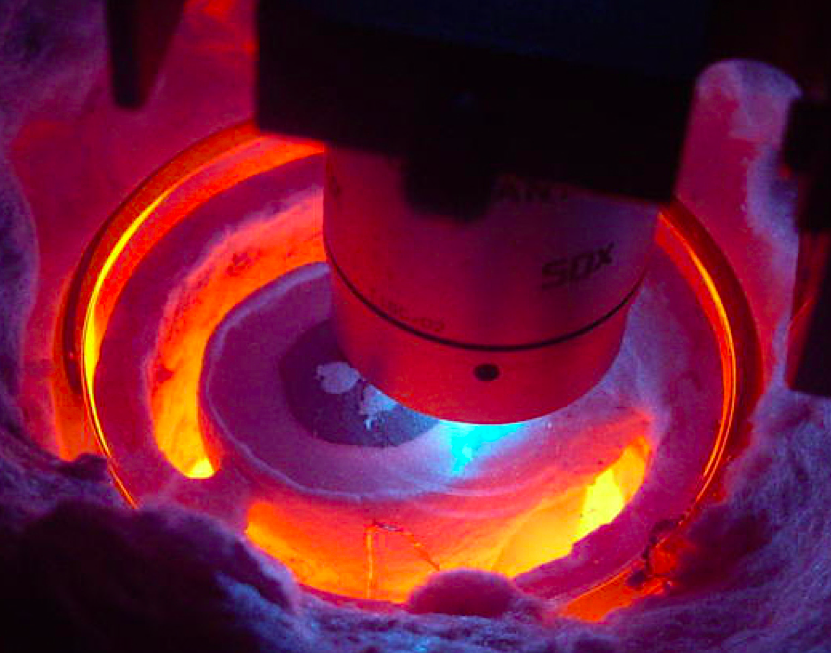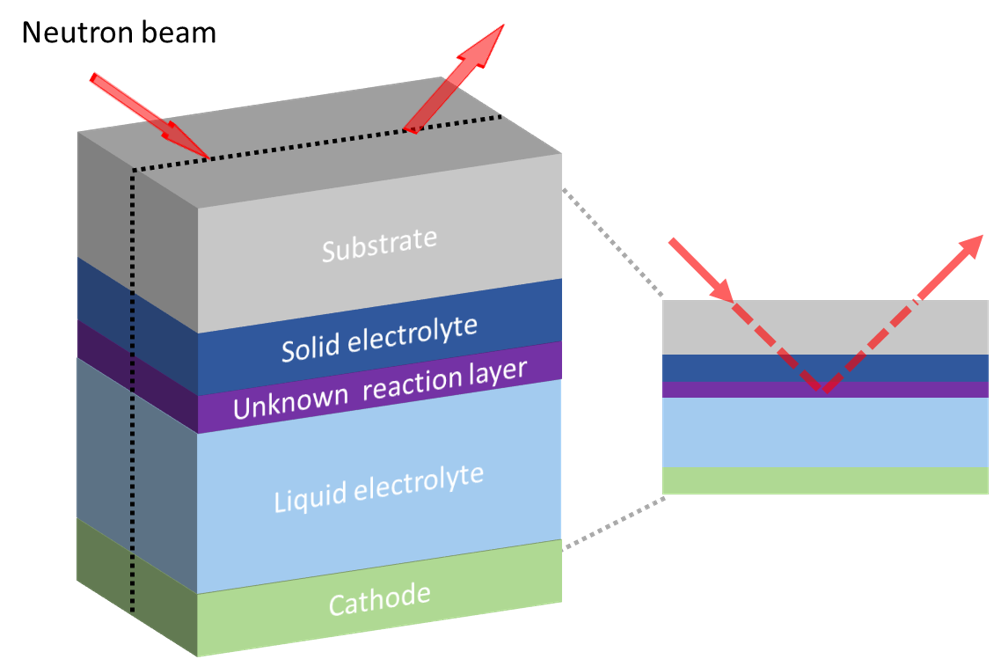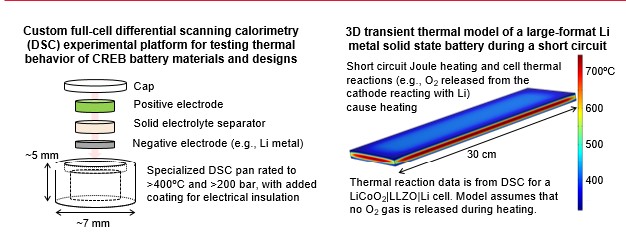Extreme Innovation
Improving Electrolyte Stability and Performance in Next-Gen Solid-State Ion Batteries
 The Walker Research Group uses operando optical methods coupled with traditional electrochemical techniques to identify conditions that improve electrolyte durability and resilience. Specifically, the Group is studying material changes in LLZO (Li 7 La 3 Zr 2 O 12 ) Li-ion conducting electrolytes and other battery-related materials at high temperatures using vibrational spectroscopy, thermal imaging and ellipsometry. In order to create LLZO’s highly conductive cubic structure (cLLZO), the material must be heated to temperatures above 600˚C and/or be doped with small amounts of secondary materials such as Al or Ta. The less conductive tetragonal structure (tLLZO) is more thermodynamically stable at tempertures ≤ 600˚C, and cLLZO to tLLZO conversion is one of the primary material challenges limiting solid state Li-ion battery development. The team uses different optical signatures of cLLZO and tLLZO to quantify how the cLLZO structure can be preserved at temperatures relevant for Li + battery operation and under large applied polarizations encountered during rapid discharge/recharge applications. Of particular interest is discovering ways to preserve and - if possible - reconstitute the cLLZO structure when conversion to tLLZO is first detected.
The Walker Research Group uses operando optical methods coupled with traditional electrochemical techniques to identify conditions that improve electrolyte durability and resilience. Specifically, the Group is studying material changes in LLZO (Li 7 La 3 Zr 2 O 12 ) Li-ion conducting electrolytes and other battery-related materials at high temperatures using vibrational spectroscopy, thermal imaging and ellipsometry. In order to create LLZO’s highly conductive cubic structure (cLLZO), the material must be heated to temperatures above 600˚C and/or be doped with small amounts of secondary materials such as Al or Ta. The less conductive tetragonal structure (tLLZO) is more thermodynamically stable at tempertures ≤ 600˚C, and cLLZO to tLLZO conversion is one of the primary material challenges limiting solid state Li-ion battery development. The team uses different optical signatures of cLLZO and tLLZO to quantify how the cLLZO structure can be preserved at temperatures relevant for Li + battery operation and under large applied polarizations encountered during rapid discharge/recharge applications. Of particular interest is discovering ways to preserve and - if possible - reconstitute the cLLZO structure when conversion to tLLZO is first detected.
PI: Robert Walker, Montana State University
Neutron Reflectometry
 Neutron reflectometry, which can probe few-nanometer thick layers in buried interfaces, and supporting techniques are applied to understand reactions between various materials such as solid electrolytes, cathodes, anodes, and liquid electrolytes. For example, solid electrolytes are beneficial for safe batteries and often couple to cathodes via a liquid electrolyte, but reactions between liquid and solid electrolytes are unknown. The reaction layer is important since this layer is known to slow down charge/discharge of the battery, and can be involved with battery degradation. Understanding this layer and solving the problem will improve charge/discharge time and battery life.
Neutron reflectometry, which can probe few-nanometer thick layers in buried interfaces, and supporting techniques are applied to understand reactions between various materials such as solid electrolytes, cathodes, anodes, and liquid electrolytes. For example, solid electrolytes are beneficial for safe batteries and often couple to cathodes via a liquid electrolyte, but reactions between liquid and solid electrolytes are unknown. The reaction layer is important since this layer is known to slow down charge/discharge of the battery, and can be involved with battery degradation. Understanding this layer and solving the problem will improve charge/discharge time and battery life.
PI: Joseph Dura, NIST
Bi-layer ceramic batteries for safe, energy-dense Army power systems

PI: Gregory Hitz, Ion Storage Systems
Fuel Cell Exploration
 Batteries store energy that when released as heat can lead to safety concerns. The Albertus Reserach Group is measuring the heat release of advanced battery material sets (e.g. solid-state lithium metal batteries), as well as building models of large-format cells that help us understand how the behavior of the materials will translate to real-world cell behavior.
Batteries store energy that when released as heat can lead to safety concerns. The Albertus Reserach Group is measuring the heat release of advanced battery material sets (e.g. solid-state lithium metal batteries), as well as building models of large-format cells that help us understand how the behavior of the materials will translate to real-world cell behavior.
PI: Paul Albertus, University of Maryland
Top